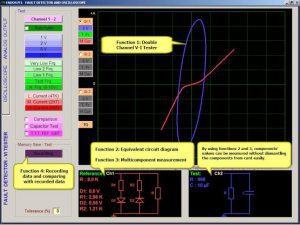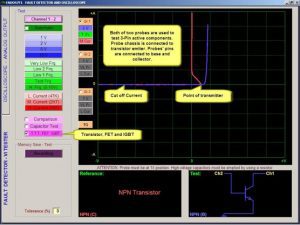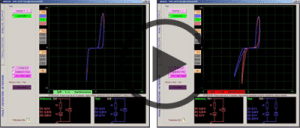FADOS multifunction circuit board testers have been specially developed by ProT Ar-Ge to determine and troubleshoot faults at all types of electronic circuit boards. They are basically computer-based VI testers. The FADOS7F1 stands for FAult Detector and OScilloscope 7 Functions in 1.

Fault Finding Technique at Electronic Cards
Usage of FADOS7F1: Determining faults of all types of electronic cards such as electronic cards of medical devices, textile and any other machines; automobile electronics; computers, monitors, TV, etc.
Electronic Components Test: IC, transistor, FET, IGBT, resistor, capacitor, indicator, etc. This device is used to determine the faults in all these electronic components.
Usage: FADOS7F1 is a dual-channel VI tester. While using the test feature, comparison can be applied without giving power to the card; while using the oscilloscope feature, energy is given to the card, and signals are controlled.
Usage1: One of the channels is connected to the chassis of the solid card, other channel is connected to the chassis of faulty card. Same points are touched by both channels. Cards are compared by touching probes to the same points of both cards. If both VI graphics are the same, touched points are solid. If not, VI graphs do not collide one another, and this means the faulty point is found.
Usage2: Different points of solid card can be recorded to memory. These recorded data is, then, opened and used in order to determine the faults on the faulty card.
Usage3: Without solid card or recorded data, faulty components can be found by looking at the VI Graph. All components have different graphs; having some experience, user will find the faults just by looking at graphs without comparison.













